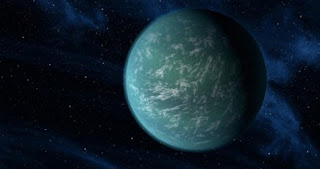"The star HD 40307 is an old dwarf stars are very quiet, so there is no reason why such a planet could contain Earth's climate," said Guillem Angla-Escude from the University of Goettingen, Germany. He led the study with Mikko Tuomi at the University of Hertfordshire in England.
The planet has a mass at least seven times the mass of Earth, but orbit the same distance from the sun is, which means the planet is receiving the amount of energy obtained by the Sun as Earth.
More than 800 planets have been found outside the Milky Way system since it was first detected in the early 1990s. But only a handful of planets have been in the area that could inhabited.
Even more rare are some planets spin zone, like this one, to create a day time and night time - thereby increasing the possibility of the formation of such an environment on Earth. The planet is not rotating said to be tied to the tides, and one half is in perpetual darkness.
"This is the closest planet Earth in the habitable zone that is not tied to the tides," said astronomer from the University of Hertfordshire Hugh Jones told Reuters on Thursday.
"Just like Goldilocks, the planet, or indeed any month in its possession, is in orbit that could be compared to that on Earth, thus increasing the likelihood of the planet uninhabitable."
Planet, named HD 40307g, are part of the system that were previously thought to only have three planets, all of them are in orbits very close to its star so that it supports the presence of water.
The astronomers made the discovery, which was disclosed in the documents of research in the journal Astronomy & Astrophysics, by examining data from HARPS spectrograph, attached to ESO European Southern Obersevatory at La Silla, Chile's desert Atacam.
HARPS tool capable of taking pictures small changes in the color of the light coming from the star host when the light is swaying under the influence of the wonders of the orbiting planet.
Reference: http://www.analisadaily.com


.jpg)








0 comments:
Post a Comment